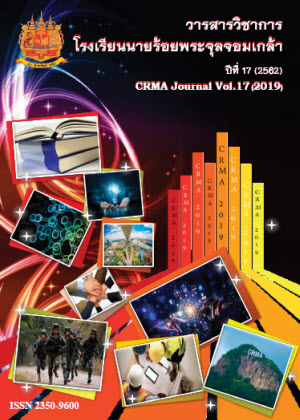A Practical System for Pig Farm Wastewater Treatment
Main Article Content
บทคัดย่อ
High rate of pig farm growth has been observed during these recent years. In 2017, 10.19 million head count of pig was raised in Thailand. In the same year, about 57 odor and 10 wastewater complaints were filed against pig farm owners. This prompted concerns from government and the Internal Security Operations Command (ISOC) to look into this problem seriously. Piggery wastewater is known to be high in organics, solids, as well as rich nutrient content such as nitrogen and phosphorus. In this study, we investigated the performance of a system consisting of a presettling tank and a three-compartment anaerobic baffled (ABR) reactor to treat pig farm wastewater under low and high flow rate condition. An experiment was run for 80 days at a demonstration farm of the Faculty of Veterinary Science in Nakhon Pathom province. The performance for total COD removal was between 50-78 percent and majorities of organics and solids removal was by sedimentation. The efficiencies of sedimentation process, however, can be very sensitive to solids accumulation and washout. The average TKN removal was only 25 percent. The low removal efficiency was due to the fact that majority of TKN was soluble and the soluble part of TKN cannot be removed properly in anaerobic process. When considering the PCD standard for pig farm, the system still needed an improvement, with respect to total COD and TSS concentrations in the effluent. Enlargement of a presettling tank or an additional presettling unit with solids drainage ports could be a practical option for better solids and organics treatment.
Article Details
ผลงานที่ได้รับการตีพิมพ์ ถือเป็นลิขสิทธิ์ของวารสารฯ
เอกสารอ้างอิง
Nokyoo, C. Swine waste management in Thailand. The 11th Annual Meeting of Water Environment Partnership in Asia (WEPA), Workshop and field Visit in Vientiane, Lao P.D.R., January 2016.
Kulpredarat, N. The impact of pig wastewater to water environment in Thailand. WEPA Group Workshop on Pig Wastewater Management in Asia. Chiang Mai, Thailand, February 2017.
Haga K. Pig waste and wastewater management in Japan. WEPA Group Workshop on Pig Wastewater Management in Asia. Chiang Mai, Thailand, February 2017.
Karny, K.N, Rodgers, M., Lawlor, P.G., Zhan, X. A Sustainable technology for treatment of piggery wastewaters. Proceeding of the global conference on global warming 2011. Lisbon, Portugal. July 2011.
Barber, W. P. and Stuckey, D. C. The use of the anaerobic baffled reactor (ABR) for wastewater treatment: a review. Water Research, 1999, 7, 1559-1578.
Ahamed, A., Chen, C. L., Rajagopal, R., Wu, D., Mao, Y., Ho, I. J. R., Lim , J. W., Wang, J. Y. Multi-phased anaerobic baffled reactor treating food waste. Bioresource Technology, 2015, 182, 239-244.
Motteran, F., Pereira, E.L., Campos, C.M.M.. The behavior of an anaerobic baffled reactor (ABR) as the first stage in the biological treatment of hog farming effluents, Brazillian journal of chemical engineering, 30, 299-310.
Boopathy, R. Biological treatment of swine waste using anaerobic baffled reactor. Bioresource technology, 1998, 64, 1-6.
Boopathy, R. and Sievers, T. M. Performance of a modified anaerobic baffled reactor to treat swine waste. Transaction of American society of agricultural engineers, 34, 2573-2578.
Suttinarakorn, S. Effect of ammonia in synthetic wastewater on anaerobic baffled reactor performance. M.S. Thesis. Department of Environmental Engineering, Chulalongkorn University, 2008.
Rattanakowin, N. Start-up and operation of anaerobic baffled reactor for treatment of high strength wastewater, M.S. Thesis. Department of Environmental Engineering, Chulalongkorn University, 2008.
Information and Communication Technology Center, Department of Livestock Development, Ministry of Agriculture and Cooperatives. (2018). 2017 National data of Swine. [online] Available at: http://ict.dld.go.th/webnew/images/stories/stat_web/yearly/2560 /T5-1.pdf [Accessed 21 Oct. 2018].


